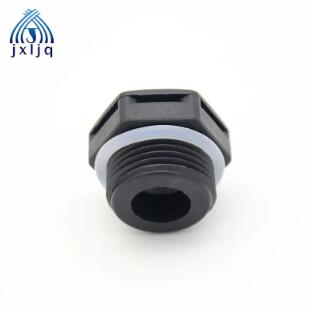How to Choose the Right Plastic Air Vent Plug for Your Application
2024-08-24
Selecting the right plastic air vent plug is crucial for ensuring the proper performance and longevity of your systems. Whether you’re dealing with electronics, automotive components, or industrial equipment, choosing the appropriate vent plug can make a significant difference in maintaining pressure balance, preventing moisture ingress, and protecting against contaminants. In this blog, we’ll guide you through the key factors to consider when choosing a plastic air vent plug for your specific application.
Understanding Your Application Requirements
Before selecting a plastic air vent plug, it’s essential to understand the specific needs of your application. Consider the following questions:
- What is the primary function of the vent plug in your system? Is it for pressure equalization, moisture management, or contaminant protection?
- What are the environmental conditions? Will the vent plug be exposed to extreme temperatures, humidity, chemicals, or UV radiation?
- What is the size and type of enclosure or system? The size of the vent plug should match the dimensions of the enclosure to ensure a proper fit and effective performance.
Key Factors to Consider
1. Material Selection
The material of the plastic air vent plug is a critical factor, as it determines the plug’s durability and resistance to environmental factors. Common materials include:
- Polypropylene (PP): Known for its chemical resistance and durability, PP is suitable for applications involving exposure to harsh chemicals and solvents.
- Polyamide (PA): Also known as nylon, PA offers excellent mechanical strength and thermal stability, making it ideal for automotive and industrial applications.
- Polyethylene (PE): PE is lightweight and resistant to moisture, making it a good choice for applications where water ingress is a concern.
2. Vent Type and Design
Plastic air vent plugs come in various designs, each suited to different applications:
- Threaded Plugs: These plugs are screwed into place, providing a secure fit and easy removal. They are ideal for systems that may require regular maintenance or replacement.
- Snap-In Plugs: These plugs are designed for quick and easy installation, making them suitable for mass production or applications where speed is essential.
- Membrane Vents: Some plastic air vent plugs include a membrane that allows air to pass through while blocking moisture and contaminants. These are particularly useful in outdoor or marine applications.
3. Ventilation and Flow Rate
The ventilation rate, or the amount of air that can pass through the vent plug, is a crucial consideration. Depending on your application, you may need a high or low flow rate. For instance, in electronics enclosures, a low flow rate may be sufficient, while in industrial machinery, a higher flow rate might be necessary to manage pressure and temperature effectively.
4. Environmental Sealing
If your application is exposed to harsh environments, such as outdoor or marine conditions, it’s important to choose a vent plug with strong environmental sealing properties. Look for plugs with IP ratings (Ingress Protection) that indicate their resistance to dust, water, and other contaminants.
5. Installation and Maintenance
Consider how easy the vent plug is to install and maintain. Some designs are more user-friendly, requiring minimal tools and effort. If your system requires regular maintenance, choose a plug that can be easily removed and replaced without damaging the enclosure or system.
Common Applications and Recommended Plugs
- Electronics Enclosures: For small electronics, choose a snap-in or threaded vent plug with a low flow rate and strong moisture resistance.
- Automotive Systems: In automotive applications, such as headlights or sensors, opt for a nylon-based threaded vent plug with high thermal stability and chemical resistance.
- Industrial Equipment: For large industrial systems, select a vent plug with a high flow rate and excellent environmental sealing, such as a polypropylene threaded plug with a membrane vent.
Conclusion
Choosing the right plastic air vent plug involves careful consideration of your application’s specific needs, environmental conditions, and performance requirements. By taking the time to evaluate these factors, you can ensure that you select a vent plug that not only meets but exceeds your expectations in terms of durability, functionality, and ease of use. Whether you’re protecting sensitive electronics, ensuring automotive reliability, or maintaining industrial equipment, the right plastic air vent plug can make all the difference.



